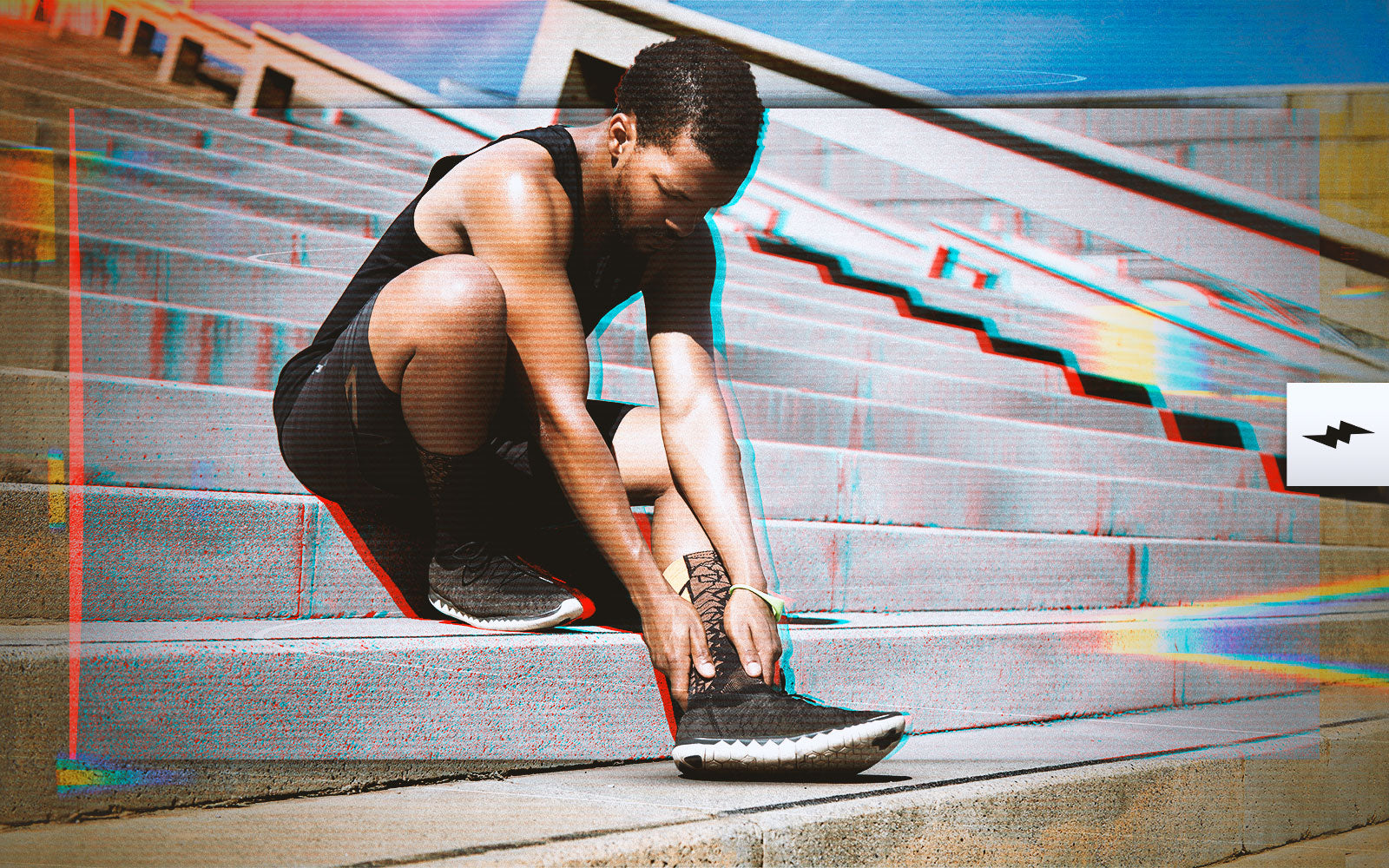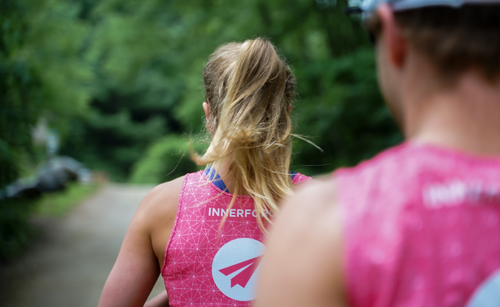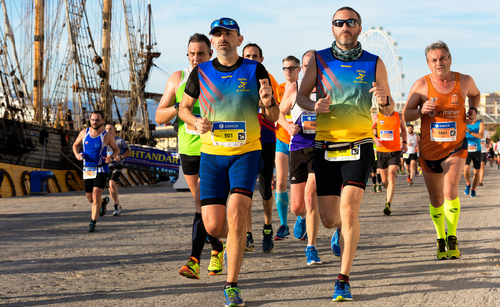How To Bulletproof Your Ankles

Given how dependent we are on our ankles, whether we are swimmers, runners or cyclists, it is mind-boggling that most of us only specifically target our ankles for training after we have experienced an injury. Let’s have a communal change of approach on this and build bulletproof ankles as part of our general training.
The key to bulletproof ankles is ensuring that you have a full range of motion, and that you have strength throughout the joint. This means focusing on stretching and strengthening the joint in all directions. We have put together exercises to help achieve this, and the best thing is that almost every one of them can be done outside of the gym, during your daily life.
What Are The Most Common Ankle Injuries?
By far, the most common is the inversion. Your foot rolls inwards and the ligaments on the outside of the ankle become damaged. You may also have experienced, less commonly, the opposite; an ankle eversion. This is when the foot rolls outwards and the stresses are felt on the inside of the ankle. Either way, the cause of these injuries is most likely due to poor range of motion or lack of strength in the ankle joint.
How Good Is Your Ankle Flexibility?
You might think that you have decent ankle flexibility, so here’s a little test for you; do a squat as low as you can. You should be able to get your butt within 3-4 inches from the ground with your heels still touching the floor. If you tried and ended up falling backwards then don’t worry, that just shows that we need to work on that full range of motion.
How To Improve Range Of Motion
Ankle flexibility and range of motion go hand in hand, and the tighter your ankles are, the more chance you have of injuring them. So let’s look at how to improve your range of motion. Oh, and the best thing about these is that you can do them all while you are in meetings at work!
Open Chain Ankle Circles – Put simply, point your toes and draw circles one way and then the other. However, to get the most out of this exercise, do it ultra-slowly and look for any areas where the movement jumps. Work to smooth these areas out by practicing regularly.
Cross-legged Stretch Routine – While sitting, cross one ankle over the top of the opposite knee and use your hands to grip your foot and stretch the ankle joint. Start by turning your foot so that the sole is facing the sky; you should feel the inversion stretch. Hold this for 15-20 seconds and then rest for 4-5 seconds.
Next, rotate the ankle the other way so you feel that eversion stretch on the inside of the ankle joint. Again, hold for 15-20 seconds and then rest for 4-5 seconds.
Finally, still with the foot crossed over your knee, point your toes and apply pressure with your hand to the top of your foot. You should get a great stretch on the top of the foot with this plantar flexion stretch. Again, hold for 15-20 seconds and then rest for 4-5 seconds.
How To Improve Ankle Strength
After a few goes round on the range of motion exercises you should have built more awareness about the way the ankle joint works, and the positions that it is likely to fail in. In order to strengthen the ankle you are going to have to place it under stress but go easy on yourself, and if you feel any pain at all then stop the exercise.
Balance Board – I love my balance board. I do the washing up standing on it, I watch TV standing on it; the balance board it constantly lying around the house as a reminder to always be conditioning so I do not experience the ankle injuries of the past. The one I have is an inflatable soft disc, so I can even take it on holiday.
Calf Raises – These are a staple for when you are queueing at the supermarket. Raise up onto tip toes and then lower one foot at a time. It is a great calf workout and will strengthen the ankles too. You might feel silly the first time you do it, but remember; every raise is reducing the risk of an injury.
Eversion Rolls – Another of my favorites that can be done at anytime of the day that you find yourself waiting around; in the lift, train station, wherever you might be. While standing, roll your ankle into the eversion position (ankle out and foot in) and place your weight onto it, then roll back to center, and over onto the opposite ankle.
Squat Jumps – The point here is to build explosive power, so squat as deeply as you can before firing your body as high as you can. Focus on landing softly in order to get maximum benefit from this exercise.
Final Thoughts
Prevention is better than cure, so get working on your ankles now and you’ll be thankful for it in the future. The fact that most of these exercises can be done during your daily life means there are no excuses; let’s get the Innerforce community bullet-proofed!
Written for Innerforce by Stewart Spiessens.

Given how dependent we are on our ankles, whether we are swimmers, runners or cyclists, it is mind-boggling that most of us only specifically target our ankles for training after we have experienced an injury. Let’s have a communal change of approach on this and build bulletproof ankles as part of our general training.
The key to bulletproof ankles is ensuring that you have a full range of motion, and that you have strength throughout the joint. This means focusing on stretching and strengthening the joint in all directions. We have put together exercises to help achieve this, and the best thing is that almost every one of them can be done outside of the gym, during your daily life.
What Are The Most Common Ankle Injuries?
By far, the most common is the inversion. Your foot rolls inwards and the ligaments on the outside of the ankle become damaged. You may also have experienced, less commonly, the opposite; an ankle eversion. This is when the foot rolls outwards and the stresses are felt on the inside of the ankle. Either way, the cause of these injuries is most likely due to poor range of motion or lack of strength in the ankle joint.
How Good Is Your Ankle Flexibility?
You might think that you have decent ankle flexibility, so here’s a little test for you; do a squat as low as you can. You should be able to get your butt within 3-4 inches from the ground with your heels still touching the floor. If you tried and ended up falling backwards then don’t worry, that just shows that we need to work on that full range of motion.
How To Improve Range Of Motion
Ankle flexibility and range of motion go hand in hand, and the tighter your ankles are, the more chance you have of injuring them. So let’s look at how to improve your range of motion. Oh, and the best thing about these is that you can do them all while you are in meetings at work!
Open Chain Ankle Circles – Put simply, point your toes and draw circles one way and then the other. However, to get the most out of this exercise, do it ultra-slowly and look for any areas where the movement jumps. Work to smooth these areas out by practicing regularly.
Cross-legged Stretch Routine – While sitting, cross one ankle over the top of the opposite knee and use your hands to grip your foot and stretch the ankle joint. Start by turning your foot so that the sole is facing the sky; you should feel the inversion stretch. Hold this for 15-20 seconds and then rest for 4-5 seconds.
Next, rotate the ankle the other way so you feel that eversion stretch on the inside of the ankle joint. Again, hold for 15-20 seconds and then rest for 4-5 seconds.
Finally, still with the foot crossed over your knee, point your toes and apply pressure with your hand to the top of your foot. You should get a great stretch on the top of the foot with this plantar flexion stretch. Again, hold for 15-20 seconds and then rest for 4-5 seconds.
How To Improve Ankle Strength
After a few goes round on the range of motion exercises you should have built more awareness about the way the ankle joint works, and the positions that it is likely to fail in. In order to strengthen the ankle you are going to have to place it under stress but go easy on yourself, and if you feel any pain at all then stop the exercise.
Balance Board – I love my balance board. I do the washing up standing on it, I watch TV standing on it; the balance board it constantly lying around the house as a reminder to always be conditioning so I do not experience the ankle injuries of the past. The one I have is an inflatable soft disc, so I can even take it on holiday.
Calf Raises – These are a staple for when you are queueing at the supermarket. Raise up onto tip toes and then lower one foot at a time. It is a great calf workout and will strengthen the ankles too. You might feel silly the first time you do it, but remember; every raise is reducing the risk of an injury.
Eversion Rolls – Another of my favorites that can be done at anytime of the day that you find yourself waiting around; in the lift, train station, wherever you might be. While standing, roll your ankle into the eversion position (ankle out and foot in) and place your weight onto it, then roll back to center, and over onto the opposite ankle.
Squat Jumps – The point here is to build explosive power, so squat as deeply as you can before firing your body as high as you can. Focus on landing softly in order to get maximum benefit from this exercise.
Final Thoughts
Prevention is better than cure, so get working on your ankles now and you’ll be thankful for it in the future. The fact that most of these exercises can be done during your daily life means there are no excuses; let’s get the Innerforce community bullet-proofed!
Written for Innerforce by Stewart Spiessens.
SEE WHAT CUSTOM APPAREL LOOKS LIKE

GEAR UP
MORE FROM THE BLOG

Justin Lippert Wears Innerforce Gear on USAT Magazine Cover
Innerforce is delighted to see our close friend Justin Lippert deservedly make it on to the front cover of USA...

A protein packed breakfast: Coconut and chia
A protein packed breakfast, that could be mistaken for dessert it’s so good!I absolutely love this breakfast in the hot...

How to Improve Your Running Technique
Whatever your ability or experience, it's always important to monitor your running technique in order to continue improving your athletic...

Pro Tips on How to Taper for Your Race
In the world of racing, one of the most misunderstood terms is tapering. The participant needs to be well-rested and...



